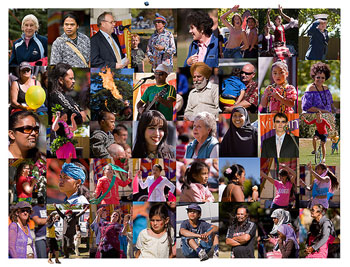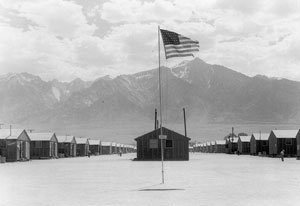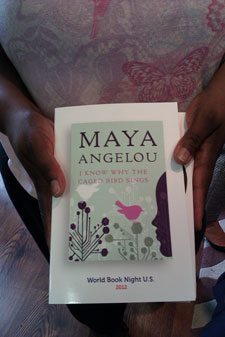
Source: Collage, Trevor Dennis, Flickr
Writers around the world, regardless of what culture they were raised in, in which religion they find comfort, or which language they write in, write about the same universal themes. Writers write about issues that come up again and again the world over. These are human issues with human themes. Let’s have a look at how one of these themes is represented in two different cultures.
Here again are the questions we can use to help analyze the theme. In this case, we will use the questions to determine the similar theme in texts from two different cultures.
- Are certain thoughts, points, or actions frequently mentioned in the text?
- What is the problem (conflict), and how is it solved?
- Are there any details in the story that may have greater meaning than the other details?

Source: Japaneseamericaninternmentcenter-flag, Dorothea Lange, Wikimedia
In her book Farewell to Manzanar, Jeanne Houston, a Japanese American, tells the story of life in an internment camp during World War II. After the Japanese attack on Pearl Harbor in 1941, the United States gathered people of Japanese descent who were living in the United States and placed them in large camps. Conditions were harsh, and families confined to these American camps were forced to endure various hardships.
Read the following excerpt. Then, complete the exercise that follows.

Source: Inside view of mess hall during meal,
University of Idaho Digital…, Flickr
They plopped in scoops of canned Vienna sausage, canned string beans, steamed rice that had been cooked too long, and on top of the rice a serving of canned apricots. The Caucasian servers were thinking that the fruit poured over rice would make a good dessert. Among the Japanese, of course, rice is never eaten with sweet foods, only with salty or savory foods. Few of us could eat such a mixture. But at this point no one dared protest. It would have been impolite.
—Jeanne Houston, Farewell to Manzanar
Click on each shaded area below, and then read the think-aloud that appears.


Source: 1st #wbnamerica recipient..turns out her
fav author is Maya Angelou, bunnicula, Flickr
Let’s look at another selection that has a similar theme about how one culture doesn’t understand or care about another.
In her book I Know Why the Caged Bird Sings, Maya Angelou talks about growing up in the South before the civil rights movement. In this selection, she describes her high school graduation. The event was exciting until a white speaker began to address the audience. The excerpt begins as he takes away all the hope and optimism by describing the limited opportunities awaiting African-American teenagers in the 1950s in the South. As the man speaks, Angelou describes the actions of those who are listening.
The man’s dead words fell like bricks around the auditorium and too many settled in my belly. Constrained by hard-learned manners I couldn’t look behind me, but to my left and right the proud graduating class of 1940 had dropped their heads. Every girl in my row had found something to do with her handkerchief. Some folded the tiny squares into love knots, some into triangles, but most were wadding them, then pressing them flat on their laps.
—Maya Angelou, I Know Why the Caged Bird Sings
For the activity below, click on portions of the text that helped you understand the similar theme. If you choose correctly, the text will highlight. (Hint: You should find seven instances to click.)

Sample Responses:
The situations are similar in that the waiters and cooks seem to have no understanding about the Japanese culture and probably no control over what food is served if they did understand. The speaker in the second text is similar in that he probably has no idea that the African American students might have different dreams than what he sets out for them. The texts are similar in the lack of understanding and knowledge of other cultures.
Now that you understand how to make comparisons between texts written about different cultures, let’s think about how we look at stories that were written many years ago. Can we still make connections and understand them today?